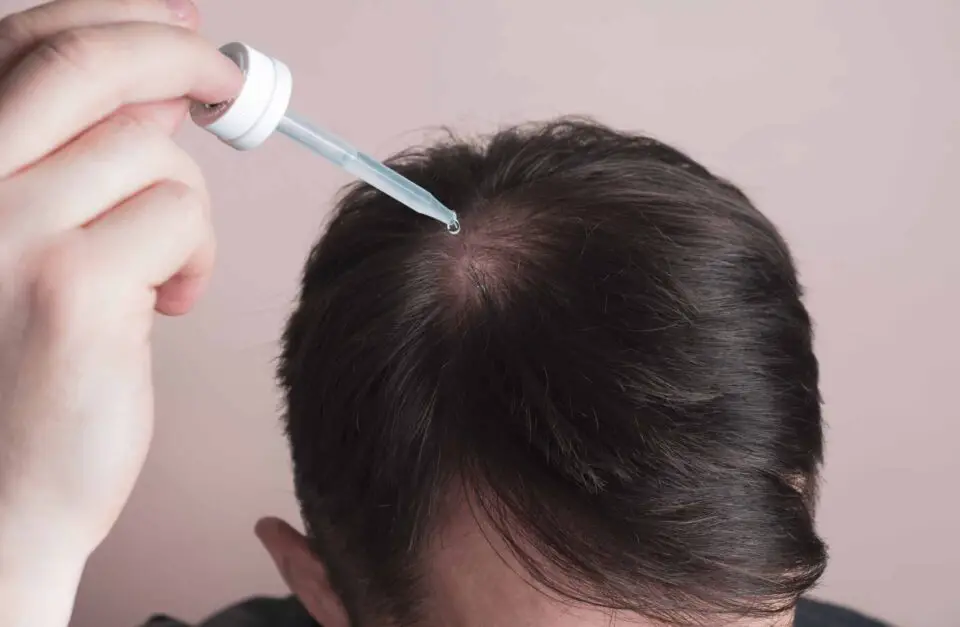Here’s what you should know about Rogaine weight gain:
Table of Contents
Rogaine Weight Gain Due to Topical (Over-the-Counter) Minoxidil — Rogaine

- Generally not linked to weight gain. Most reputable sources report no substantial evidence that topical minoxidil causes weight gain:
- Wimpole Clinic states: “There’s no evidence to suggest topical minoxidil will lead to weight gain”.
- GoodRx labels unexplained weight gain a rare side effect among many potential, but uncommon, reactions.
- Some rare reports of fluid retention. In very uncommon cases, topical minoxidil may cause slight weight gain due to mild fluid retention:
- The Independent Pharmacy notes: “Slight weight gain is also possible due to fluid retention… this effect is uncommon, but over weeks… an increase in body weight by a few pounds may be noticed. This reverses after stopping treatment.”.
- Drugs.com also lists “weight gain (rapid)” among rare side effects of Rogaine for women.
- Minimal systemic absorption. A caution from RealSelf’s forum echoes clinical consensus: topical minoxidil is minimally absorbed systemically, making weight gain unlikely.
- A Mayo Clinic overview confirms topical use is generally well tolerated and systemic side effects are rare.
Bottom line: If using topical Rogaine, the risk of weight gain is very low. However, if you notice unexpected swelling or weight gain, it’s wise to consult your healthcare provider.
Why Does Rogaine Cause Weight Gain?: Oral Minoxidil (Prescription-Only)
This form of minoxidil—used for hair loss or, more commonly, for hypertension—carries a higher risk of systemic side effects, including weight gain due to fluid retention:
- Commonly associated with fluid retention. Optum Perks emphasizes that oral minoxidil may cause weight gain, primarily from water and salt retention—not fat gain.
- Manufacturer and clinical guidance. The Mayo Clinic advises daily weight checks: a sudden gain of 5 pounds (2 kg) or more warrants contacting your doctor.
- Serious potential side effects. Essential Clinic notes that oral minoxidil can induce adverse effects such as pericarditis and fluid retention, requiring close medical supervision.
- Further, medical literature describes fluid retention and tachycardia as dose-dependent side effects that may occasionally lead to significant weight gain or require discontinuation.
Summary Table of Can Rogaine Cause Weight Gain?
| Formulation | Weight Gain Risk | Likely Cause | Notes |
|---|---|---|---|
| Topical Minoxidil (Rogaine) | Very low / Rare | Mild fluid retention | Reversible; consult if symptoms occur |
| Oral Minoxidil (Prescription) | Moderate to High | Water and salt retention (edema) | Requires monitoring; weight gain may be sudden |
Final Thoughts on Rogaine and Weight Gain
- If you’re just using topical Rogaine, weight gain from minoxidil is very unlikely, though rare fluid retention may occur in some.
- If you’re on oral minoxidil, especially for hypertension or off-label hair loss, be aware of the higher likelihood of weight gain, and ensure you’re under medical supervision.
As always, if you’re noticing persistent or concerning symptoms—especially swelling, rapid weight gain, or shortness of breath—reach out to your healthcare provider for guidance.
Allergic Reaction to Rogaine
Here’s what you should know about allergic reactions to Rogaine (topical minoxidil):
Types of Skin Reactions
- Irritant vs. Allergic Reactions
- Common mild reactions—like redness, scalp flakiness, and itchiness—often stem from irritation, not true allergy.
- A true allergic reaction (allergic contact dermatitis) can result from ingredients such as propylene glycol or, less frequently, minoxidil itself.
- Key Triggers
- Propylene glycol—used in liquid formulations—is the most common allergen in skin reactions linked to Rogaine.
- Minoxidil itself is a less common allergen, but documented cases do exist.
- Foam vs. Liquid Formulations
- Foams typically omit propylene glycol, making them less likely to provoke reactions in those sensitive to that ingredient.
- However, being allergic to minoxidil remains possible regardless of the formulation.
Recognizing an Allergic Reaction
Symptoms indicative of an allergic reaction include:
- Red, itchy, scaly patches on the scalp or face
- Hives or raised bumps
- Swelling that may resemble angioedema
In rare cases, facial swelling can mimic angioedema and may be confirmed as allergic contact dermatitis via patch testing.
Diagnosis & Management
- Patch testing is the definitive way to determine whether the allergen is propylene glycol, minoxidil, or another component.
- If allergy to propylene glycol is identified, switching to foam or using a liquid with alternative solvents (like butylene glycol, glycerin, or polysorbate) may work.
- If the allergy is to minoxidil itself, all topical forms should be stopped. Other hair loss treatments can be explored with a healthcare provider.
Quick Overview
| Reaction Type | Common Triggers | Symptoms | Recommended Steps |
|---|---|---|---|
| Irritant contact dermatitis | Harsh solvents, friction | Itching, flaking, mild redness | Use a gentler formula; moisturizing; reduce frequency |
| Allergy to propylene glycol | Propylene glycol in liquid | Rash, itching, possible swelling | Switch to foam or alternative solvent formulations |
| Allergy to minoxidil | Minoxidil ingredient | Rash, hives, swelling, more severe | Discontinue use entirely; consider other treatments |
Final Thoughts
- Mild irritation is common and not necessarily serious—start by adjusting frequency or switching formulations.
- True allergic reactions are less common but important to recognize—if symptoms are concerning or persistent, patch testing is key to identifying the cause.
- Depending on your sensitivity, switching formulations or stopping use altogether may be necessary—consult a dermatologist or healthcare provider to find suitable alternatives.
READ ALSO: Best Protein Bar for Losing Weight: 2 Fantastic Options
Photo Credits: H-Shot
READ ALSO: 5 Potential Yohimbe Side Effects You Might Suffer